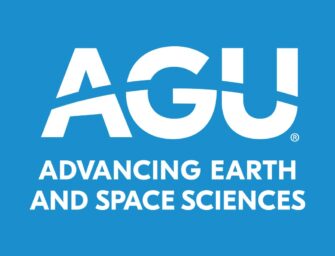Robust Investment in Natural Hazards Research is Essential to Our Safety and Security
Tomorrow, 13 October, is International Day for Disaster Reduction, created by the United Nations in 1989 to promote risk-awareness and natural disaster reduction. Now, as then, the need for proactive action is clear to help save lives and reduce devastating economic losses.
Since 13 October last year, the United States has seen flooding from Tropical Storm Lane in Hawaii and Hurricane Florence in North and South Carolina, the latter causing 39 fatalities and an estimated $50 billion in damages. There have also been massive wildfires in the Pacific Northwest and California, the latter costing $1.35 billion in firefighting costs alone, and at least five other severe weather-related “billion-dollar disasters.” My home of Madison, Wis. experienced a record-setting rainstorm and flooding in August — leading to $100 million in damage and exposing critical shortcomings in Madison’s infrastructure and land use policies.
Globally, there have been dust storms in India, Super Typhoon Mangkhut in the Philippines, mudslides in Japan, and major earthquakes in Mexico and Papua New Guinea, to name just a few. As I write, the rubble is still being cleared after a major 7.5 magnitude earthquake and resulting tsunami in Indonesia, leaving hundreds of people dead and thousands displaced.
While these disasters are tragic—and much more could be done to reduce their impacts—it is important to recognize the positive contributions of Earth and space scientists. For example, tropical cyclone forecasts have improved dramatically in recent decades, giving advance storm warnings that have helped reduce fatalities. High-resolution satellite imagery can map key vulnerabilities before disasters occur and provide situational awareness in their aftermath. Advances in geophysical understanding of earthquakes have led to stronger building codes and safer buildings. None of these discoveries, innovations, and solutions would have been possible without the research, education, and outreach efforts of AGU members — and without the sustained funding support for agencies including NOAA, NASA, USGS, and others.
Continued, robust research funding is needed to ensure progress and to train the next generation of researchers, engineers, risk modelers, and emergency planners. This need is particularly pronounced given new and emerging hazards, including space weather and more frequent extreme weather events in a changing climate. Funding support must be allocated in recognition of the diverse and multidimensional problems of natural hazards, which requires scientific advances, promoting practical applications of research findings, and collaboration with our colleagues in the social and economic sciences.
Of course, investment in science and disaster reduction is critical for public safety. It is also increasingly clear that this investment is necessary for reasons of national security — climate change and its role in disasters is very likely to exacerbate conflict and threaten U.S. interests at home and globally. Furthermore, it is important that data collected by public agencies about natural hazards remain freely available. This approach is not only cost-effective; it has helped spur private sector innovation in a wide range of fields.
As we reflect on the past year and look toward next year’s International Day for Disaster Reduction, I would ask that all AGU members consider the following:
- Ask yourself what you can do to make your work more relevant to citizens and policy makers, and how you can effectively demonstrate your work’s importance.
- Write to your representatives at local, state, and federal levels to articulate why funding for hazards-related research, data collection, and education is important to their constituents.
- Commit to at least one career goal for the 2018 Fall Meeting in Washington, D.C.: making new research connections/collaborations; communicating your work to a D.C.-based agency or decision maker; or learning more about the new and exciting data, methods, and applications being developed by your fellow AGU members.




There are no comments
Add yours